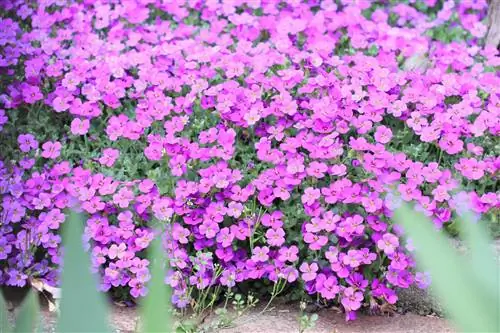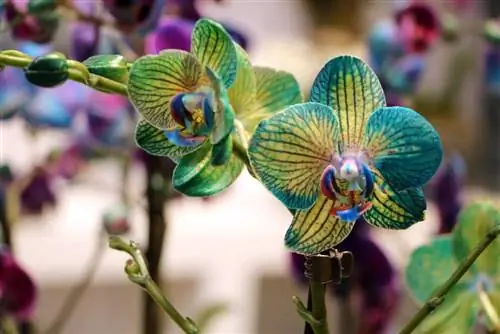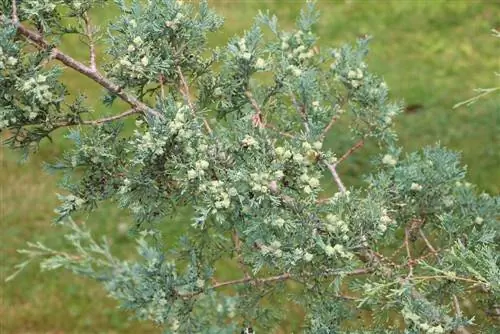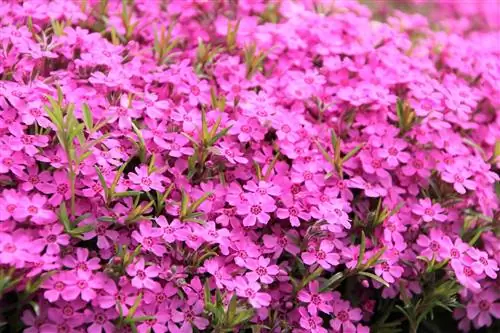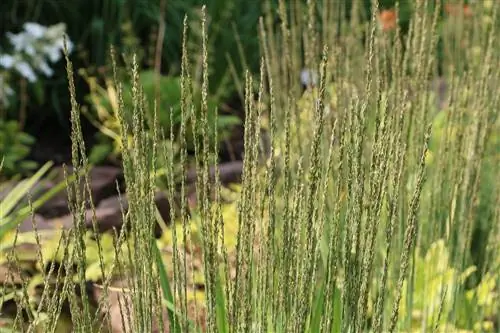- Author admin [email protected].
- Public 2023-12-17 03:39.
- Last modified 2025-06-01 06:48.
Despite its name, the cushion perennial not only blooms in blue, it also shines in white, pink, purple and red. Beautiful combinations can be created with goose cress, alyssum, cushion phlox and cushion soapwort as companion plants in the rock garden. Blue cushions are the first source of nectar of the year for bees and other insects.
Planting time
The best time to plant the blue cushions is spring or autumn. If you want to cover a larger area, the ideal distance between the individual plants is around 20 to 30 centimeters, so around eight to ten plants are needed per square meter. Once these plants have formed a closed carpet, they suppress weeds, making such a bed very easy to care for. This carpet grows larger over the years and remains intact even in winter, because the blue cushion is an evergreen plant.
Care, cutting and propagation
Blue cushions grow best in rich, calcareous soil that is loose and well-drained. If you plant them on the tops of walls, make sure that there is always enough soil available, otherwise the growth will be poor and the plants will become bare from below. This is also the case in shady locations. Fertilization is carried out in early spring before flowering with compost or natural fertilizer, but sparingly, as winter hardiness is reduced if too much fertilizer is applied.
As a rule, blue cushions do not need any winter protection; they can only be covered with some brushwood in extreme cold periods without snow. They are also frugal when it comes to watering. But if it is dry for a long time, you should water the blue cushions, otherwise the cushions will turn yellow. Diseases and pests are extremely rare on these plants, except for the snails that love the tender shoot tips.
After flowering, the cushion perennials must be cut back heavily, this promotes growth and flowering. Sometimes a second, but much weaker, bloom appears in the summer. If you want to limit the growth of the blue cushions, you can simply cut or cut parts of the plant along the edge when cutting. Some varieties can be grown from seeds. However, it is easier to propagate with cuttings, which can be done all year round. To do this, after flowering, you cut off small parts of the main plant and place them individually in pots.
The young blue cushion plants are then planted in their final locations in autumn or the following early spring. Blue cushions planted in autumn still grow well and bloom more profusely in spring because they do not have any “dislocation shock”. The seedlings can also be planted out right away, but they should initially be protected from excessive sunlight. Before planting, the soil must be loosened well and compost or fertilizer added. The ground should also be free of weeds, as it will be difficult to remove them from between the cushions later. Blue pillows are frugal. With little care, they delight us every year with their lush carpets of flowers.
Location
Blue cushions should be placed in as sunny a place as possible because their homeland is in the Mediterranean region. They are best planted in a rock garden or on a dry stone wall because they thrive better in dry soil than in a location that is too wet. For this reason, they only need additional watering in particularly dry times. You should also be extremely careful with fertilizers for these plants, as too much fertilizer can definitely harm them.
Tips for pruning
So that the plant grows compactly and produces many flowers again the following year, it needs pruning, which should ideally be done immediately after the flowering period. The shoots of the plant can be shortened by half. In general, this pruning is not absolutely necessary. However, by removing the withered flowers in late summer or autumn, a second flower may form again. This also has the advantage that the plants in the lower area do not shed as easily. However, dead plant parts should definitely be removed so that the plants do not waste energy unnecessarily.
Blue cushion - a popular cushion perennial
The original homeland of the blue cushions is Sicily, the Balkans, Greece and Asia Minor. Therefore they love a warm, sunny location. The botanical name of the plant is Aubrieta from the cruciferous family. Blue cushions are low, perennial and hardy plants. As typical upholstery perennials, they are suitable for rock gardens, wall tops, joints on steps and slabs, but also look beautiful in balcony boxes, as bed borders and in planters. The approximately 10 cm high cushions of grey-green leaves almost completely disappear under the carpet of flowers during the flowering period in April-May. Over the years, countless color and flower variations have emerged. Well-known and flowering varieties are:
- Aubrieta “Blue Tit”, well-growing, flower color blue-violet
- Aubrieta “Hürth”, lush cushions, flower color light blue
- Aubrieta “Hamburger Stadtpark”, dense cushions, small deep blue-violet flowers
- Aubrieta “Kitty”, large-flowered variety, flower color violet-blue
- Aubrieta “Dr. Mules", good growth characteristics, flower color reddish-violet
- Aubrieta “Downers Bont”, white variegated foliage, flower color dark purple
- Aubrieta “Ruby Fire”, striking variety with ruby red flowers
- Aubrieta “Winterling”, dense cushions with small, white flowers
- `Aurea`, syn. `Aurea Variegata`, has gold-edged leaves and purple flowers.
- `Dr. Mules' impresses with its violet-red flowers.
- `Wanda` produces double, red flowers.
- `Alba` produces white flowers.
Profile
- Height 7.5 - 10 cm
- Planting distance 4.5 - 60 cm
- Flowering period from spring to early summer
- Well-drained, preferably alkaline garden soil
- Sunny location
- hardy
Blue cushions are a popular decoration for rock gardens and borders. However, they develop their most beautiful splendor when they can proliferate on dry stone walls.
The plant forms hanging or cushion-shaped cushions in various shades of green. In some varieties the foliage is golden yellow or streaked with white. From early spring to early summer, small purple, pink, white or reddish cruciferous flowers appear.

